Comprehensive molecular exploration identified promoter DNA methylation of the CRBP1 gene as a determinant of radiation sensitivity in rectal cancer
- PMID: 28291773
- PMCID: PMC5396119
- DOI: 10.1038/bjc.2017.65
Comprehensive molecular exploration identified promoter DNA methylation of the CRBP1 gene as a determinant of radiation sensitivity in rectal cancer
Abstract
Background: Neoadjuvant chemoradiotherapy (NCRT) for advanced rectal cancer (RC) is a well-evidenced therapy; however, some RC patients have no therapeutic response. Patient selection for NCRT so that non-responsive patients are excluded has been subjective. To date, no molecular markers indicating radiation sensitivity have been reported.
Methods: We irradiated six colorectal cancer (CRC) cell lines and identified HCT116 cells as radiation-sensitive and HCT15 and DLD-1 cells as radiation resistant. Using a microarray, we selected candidate radiation sensitivity marker genes by choosing genes whose expression was consistent with a radiation-resistant or sensitive cell phenotype.
Results: Among candidate genes, cellular retinol binding protein 1 (CRBP1) was of particular interest because it was not only induced in HCT116 cells by tentative 10 Gy radiation treatments, but also its expression was increased in HCT116-derived radiation-resistant cells vs parental cells. Forced expression of CRBP1 decreased the viability of both HCT15 and DLD-1 cells in response to radiation therapy. We also confirmed that CRBP1 was epigenetically silenced by hypermethylation of its promoter DNA, and that the quantitative methylation value of CRBP1 significantly correlated with histological response in RC patients with NCRT (P=0.031).
Conclusions: Our study identified CRBP1 as a radiation-sensitive predictor in RC.
Conflict of interest statement
The authors declare no conflict of interest.
Figures
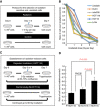
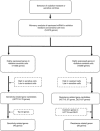
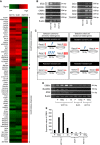
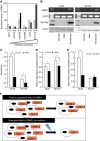
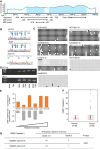
Similar articles
-
DNA methylation of genes linked with retinoid signaling in gastric carcinoma: expression of the retinoid acid receptor beta, cellular retinol-binding protein 1, and tazarotene-induced gene 1 genes is associated with DNA methylation.Cancer. 2005 Oct 15;104(8):1609-19. doi: 10.1002/cncr.21392. Cancer. 2005. PMID: 16134180
-
Correlation between expression of cellular retinol-binding protein 1 and its methylation status in larynx cancer.J Clin Pathol. 2012 Jan;65(1):46-50. doi: 10.1136/jclinpath-2011-200304. Epub 2011 Nov 2. J Clin Pathol. 2012. PMID: 22049223
-
PSMB8 as a Candidate Marker of Responsiveness to Preoperative Radiation Therapy in Rectal Cancer Patients.Int J Radiat Oncol Biol Phys. 2017 Aug 1;98(5):1164-1173. doi: 10.1016/j.ijrobp.2017.03.023. Epub 2017 Mar 22. Int J Radiat Oncol Biol Phys. 2017. PMID: 28721901
-
Cellular retinol-binding protein 1: a therapeutic and diagnostic tumor marker.Mol Biol Rep. 2023 Feb;50(2):1885-1894. doi: 10.1007/s11033-022-08179-2. Epub 2022 Dec 14. Mol Biol Rep. 2023. PMID: 36515825 Review.
-
Mechanisms of microRNA action in rectal cancer radiotherapy.Chin Med J (Engl). 2022 Sep 5;135(17):2017-2025. doi: 10.1097/CM9.0000000000002139. Chin Med J (Engl). 2022. PMID: 35943251 Free PMC article. Review.
Cited by
-
Vitamin A and Retinoids in Bladder Cancer Chemoprevention and Treatment: A Narrative Review of Current Evidence, Challenges and Future Prospects.Int J Mol Sci. 2021 Mar 29;22(7):3510. doi: 10.3390/ijms22073510. Int J Mol Sci. 2021. PMID: 33805295 Free PMC article. Review.
-
Predicting response to neoadjuvant chemoradiotherapy in rectal cancer: from biomarkers to tumor models.Ther Adv Med Oncol. 2022 Feb 21;14:17588359221077972. doi: 10.1177/17588359221077972. eCollection 2022. Ther Adv Med Oncol. 2022. PMID: 35222695 Free PMC article. Review.
-
M6A "Writer" Gene METTL14: A Favorable Prognostic Biomarker and Correlated With Immune Infiltrates in Rectal Cancer.Front Oncol. 2021 Jun 17;11:615296. doi: 10.3389/fonc.2021.615296. eCollection 2021. Front Oncol. 2021. PMID: 34221955 Free PMC article.
-
HIST1H2BB and MAGI2 Methylation and Somatic Mutations as Precision Medicine Biomarkers for Diagnosis and Prognosis of High-grade Serous Ovarian Cancer.Cancer Prev Res (Phila). 2020 Sep;13(9):783-794. doi: 10.1158/1940-6207.CAPR-19-0412. Epub 2020 Jun 24. Cancer Prev Res (Phila). 2020. PMID: 32581010 Free PMC article.
-
Retinol binding protein 1-dependent activation of NF- κB signaling enhances the malignancy of non-glioblastomatous diffuse gliomas.Cancer Sci. 2022 Feb;113(2):517-528. doi: 10.1111/cas.15233. Epub 2021 Dec 15. Cancer Sci. 2022. PMID: 34866280 Free PMC article.
References
-
- Akiyoshi T, Kobunai T, Watanabe T (2012) Predicting the response to preoperative radiation or chemoradiation by a microarray analysis of the gene expression profiles in rectal cancer. Surg Today 42: 713–719. - PubMed
-
- Arigami T, Uenosono Y, Ishigami S, Yanagita S, Hagihara T, Haraguchi N, Matsushita D, Hirahara T, Okumura H, Uchikado Y, Nakajo A, Hokita S, Natsugoe S (2013) Clinical significance of stanniocalcin 2 expression as a predictor of tumor progression in gastric cancer. Oncol Rep 30: 2838–2844. - PubMed
-
- Chang AC-M, Jellinek DA, Reddel RR (2003) Mammalian stanniocalcins and cancer. Endocr Relat Cancer 10: 359–373. - PubMed
-
- Ebert MPA, Tänzer M, Balluff B, Burgermeister E, Kretzschmar AK, Hughes DJ, Tetzner R, Lofton-Day C, Rosenberg R, Reinacher-Schick AC, Schulmann K, Tannapfel A, Hofheinz R, Röcken C, Keller G, Langer R, Specht K, Porschen R, Stöhlmacher-Williams J, Schuster T, Ströbel P, Schmid RM (2012) TFAP2E-DKK4 and chemoresistance in colorectal cancer. N Engl J Med 366: 44–53. - PubMed
MeSH terms
Substances
LinkOut - more resources
Full Text Sources
Other Literature Sources
Research Materials
Miscellaneous

